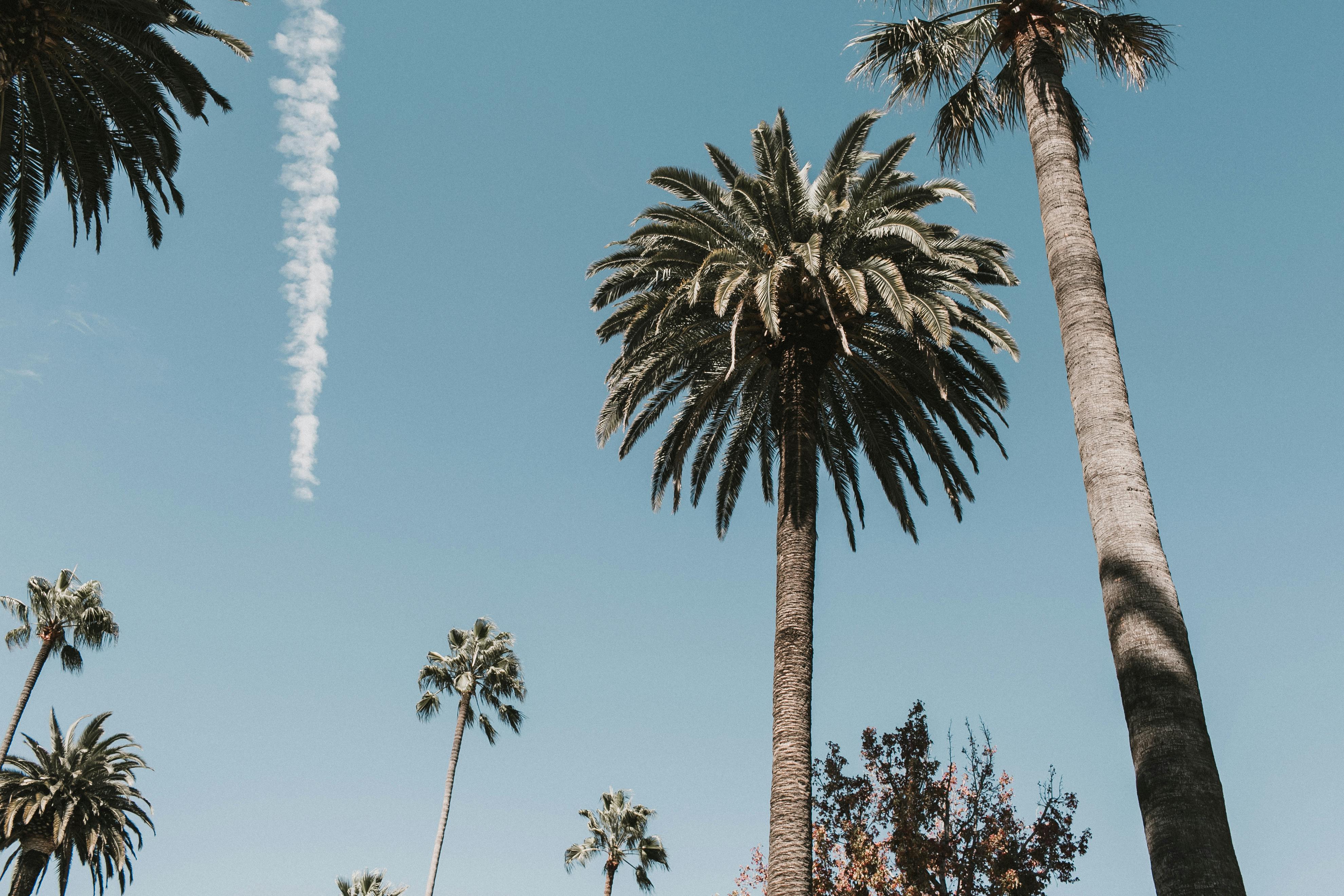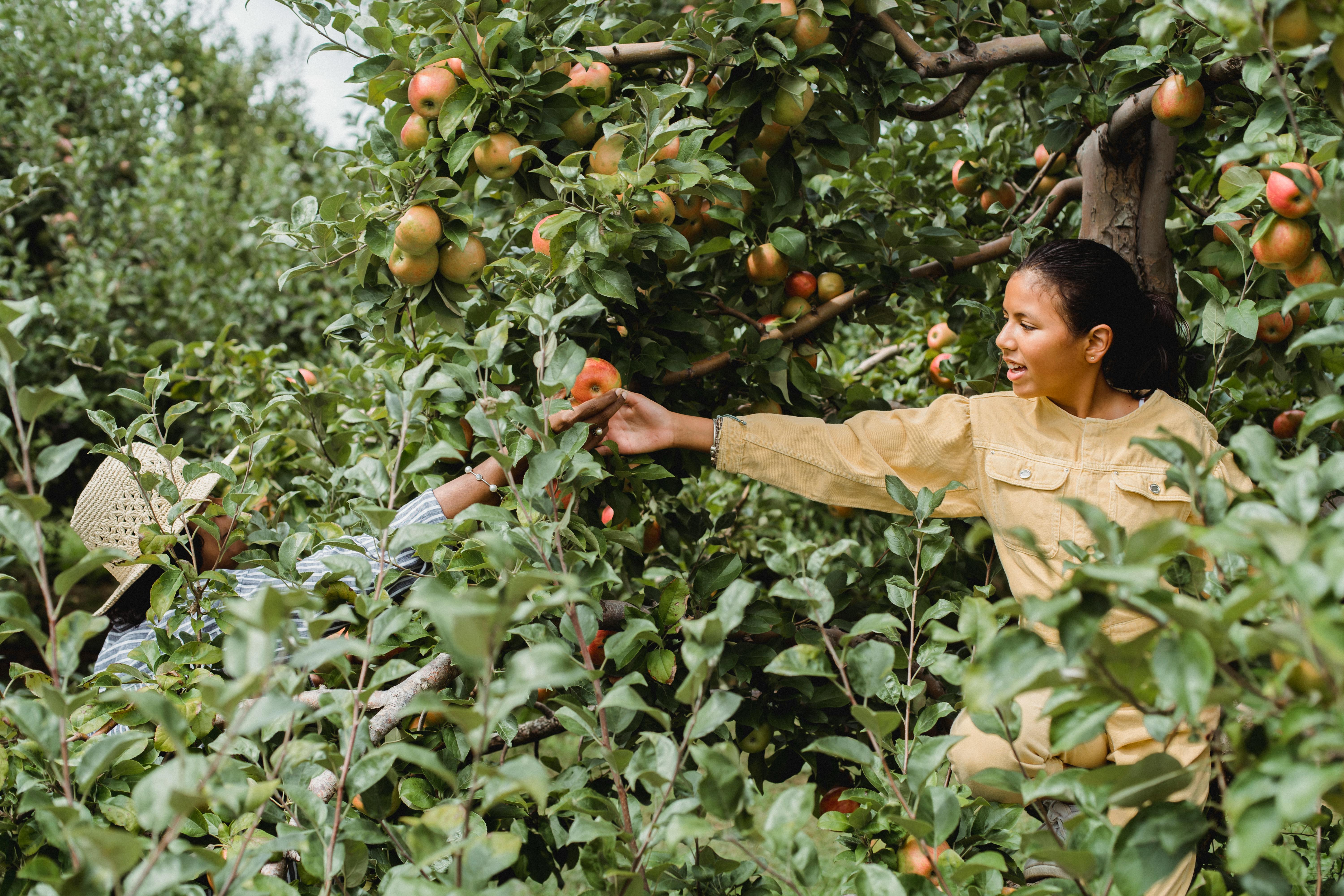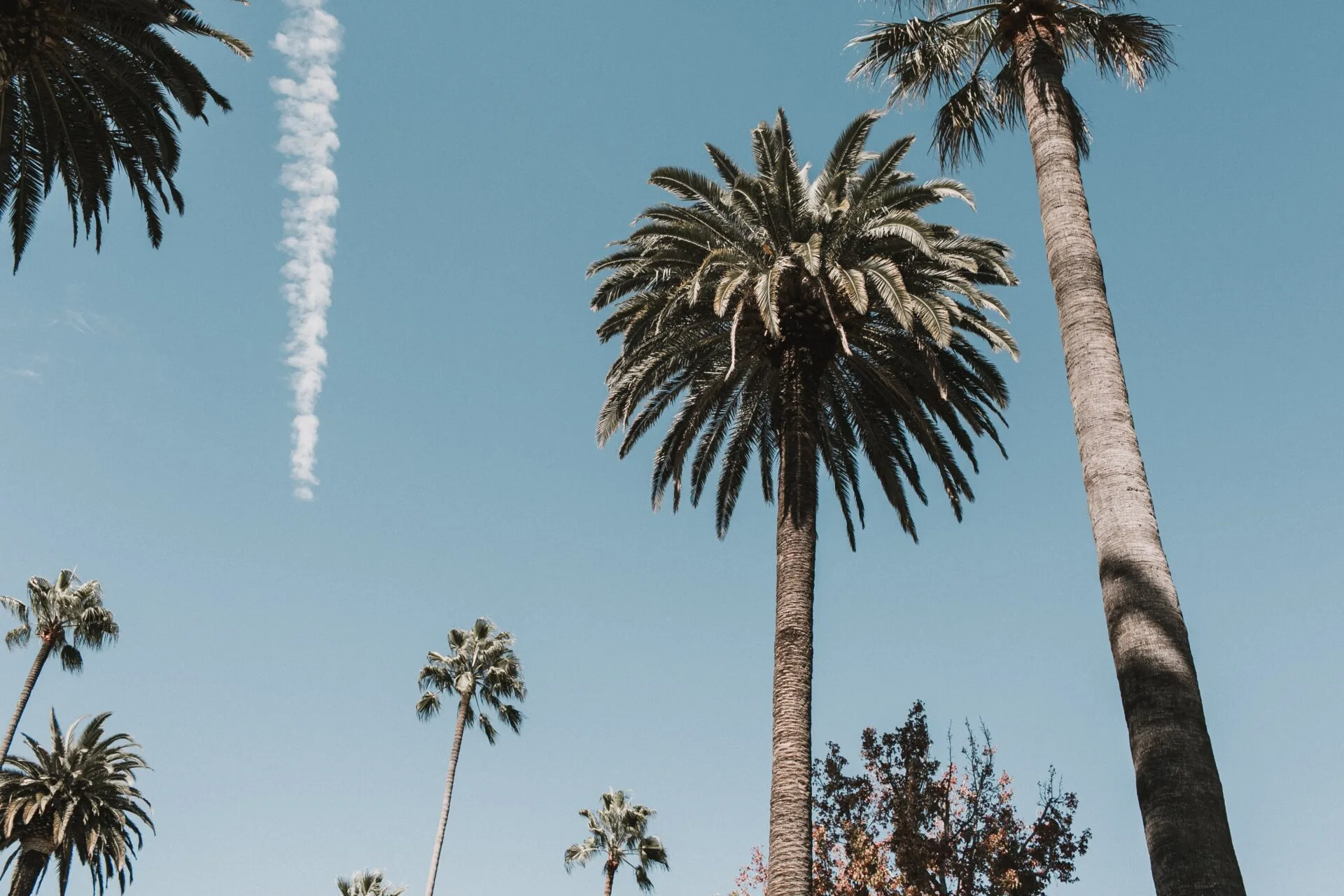Fruit trees in Southern California require regular fertilization in order to produce healthy and abundant yields. Knowing when to fertilize is an important part of successful fruit tree care. The timing of fertilization is determined by the type of tree, soil fertility, and climate conditions. With the right knowledge and care, fruit trees in Southern California can thrive and provide delicious fruits for many years.The types of fertilizer most commonly used for fruit trees in Southern California are slow-release fertilizers, organic fertilizers, and liquid fertilizers. Slow-release fertilizers are designed to slowly provide nutrients to the soil over a period of time, which helps to ensure the tree is not over-fertilized. Organic fertilizers are made from natural materials such as manure, bone meal, and fish emulsion, and they help add vital nutrients to the soil in a natural way. Liquid fertilizers are applied directly to the soil and provide quick absorption of nutrients.
When to Apply Fertilizer on Fruit Trees in Southern California
Fruit trees are a great addition to any Southern California garden and can provide a bounty of delicious fruit for several months of the year. In order to get the most out of your fruit trees, it is important to know when to apply fertilizer. Applying fertilizer at the right time can help your trees grow stronger and produce more fruit.
Fertilizer should be applied in early spring, when the tree begins to wake from its winter dormancy and starts producing new growth. This is usually around March or April in most parts of Southern California. When applying fertilizer, it is important to use an organic fertilizer that is specifically formulated for fruit trees. Spread the fertilizer evenly around the base of the tree, taking care not to get any on the trunk or leaves. Water the tree thoroughly after applying fertilizer so that it can absorb all of the nutrients from the soil.
In late summer or early fall, fertilize your trees again with a low-nitrogen fertilizer that will promote root growth and help prepare them for winter dormancy. This will also help ensure your trees have enough energy for producing fruit buds in springtime. It’s also important to prune dead or damaged branches during this time as well, as this will help increase air circulation and reduce pest problems around your tree.
Finally, don’t forget to water your fruit trees regularly throughout the growing season, especially during dry periods! A deep watering once a week should be enough to keep your trees healthy and productive. With proper care and attention, you’ll be able to enjoy an abundance of delicious fruit from your backyard garden in no time!
Best Time to Fertilize Fruit Trees in Southern California
Fertilizing fruit trees in Southern California is essential for ensuring healthy growth and abundant crops. The ideal time to fertilize is in late winter or early spring when the trees have started to flower and leaf out. Fertilizing too early or too late can cause damage to the tree, delay flowering, and reduce fruit production.
It is important to select the right fertilizer for your specific type of fruit tree, as each type has different nutrient needs. Organic fertilizers are usually preferred as they are gentle on the environment and provide a slow release of nutrients over time.
Before applying fertilizer, it is important to first remove any dead leaves, weeds, or debris from around the base of the tree. This will ensure that the fertilizer can reach the roots more effectively and help prevent any potential disease problems.
When applying fertilizer, be sure to spread it evenly around the base of the tree, avoiding any contact with flowers or foliage as this can cause burning and damage to these parts of the tree. After application, water thoroughly so that all of the fertilizer is absorbed into the soil and made available to the roots of the tree.
Finally, keep an eye on your trees throughout their growing season and monitor for signs of nutrient deficiencies such as yellowing leaves or stunted growth. If you notice any issues with your trees then additional fertilizer applications may be necessary.
Overall, proper fertilization helps promote strong root systems, healthy growth habits, increased flowering and fruiting potentials for your fruit trees in Southern California. With a little bit of care and attention you can ensure that your trees will produce abundant harvests for years to come!
Guidelines for Applying Fertilizer on Fruit Trees in Southern California
Fertilizing fruit trees is an important part of maintaining them and ensuring they produce healthy fruits. In Southern California, there are specific guidelines to follow when applying fertilizer to fruit trees. It is important to use the right type, amount, and timing when applying fertilizer to ensure the best results.
The type of fertilizer used will depend on what type of tree is being fertilized. Trees that produce citrus fruits require a special citrus fertilizer that has higher levels of nitrogen and potassium than other types of trees. Trees that produce stone fruits such as apricots, peaches, plums, and nectarines will need a fertilizer that is high in phosphorus and potassium.
The amount of fertilizer used should be based on the size of the tree and the soil type. A general rule of thumb is to use one pound of fertilizer per inch of tree trunk diameter for smaller trees (less than six inches in diameter) and two pounds per inch for larger trees (more than six inches in diameter). However, this can vary depending on the soil type and how well it holds nutrients. For example, sandy soils tend to need more frequent fertilizing than clay soils since they don’t hold nutrients as well.
The timing for fertilizing fruit trees is also important as it can affect the growth and fruit production of the tree. Generally speaking, it’s best to apply fertilizer during the spring or early summer months when new growth begins to appear on the tree. This ensures that there are adequate nutrients available during this period for optimal growth and fruit production later in the season. Additionally, it’s important not to over-fertilize as this can cause excessive leaf growth at the expense of fruit production.
By following these guidelines for applying fertilizer on fruit trees in Southern California, you can ensure your trees remain healthy and productive throughout the season.
Benefits of Regularly Fertilizing Fruit Trees in Southern California
Fruit trees in Southern California require regular fertilizing to ensure they remain healthy and produce abundant yields. Fertilizing helps maintain the soil’s pH balance, replenish nutrients, and increase soil fertility. This can be achieved by applying a balanced fertilizer, such as a 10-10-10, which contains equal amounts of nitrogen, phosphorus and potassium. Regular fertilizing provides the following benefits to fruit trees in Southern California:
Improved Soil Quality
Fertilizers help to improve the quality of the soil by adding essential nutrients like nitrogen, phosphorus and potassium. These nutrients help promote strong root growth and healthy foliage. Additionally, organic matter is added when organic fertilizers are used, which further helps improve soil quality over time.
Greater Yields
Regularly fertilizing fruit trees in Southern California encourages increased yields. Nutrients help to promote new growth and also aids existing fruits or flowers in reaching their full potential. Additionally, providing a good balance of nutrients helps to reduce stress on the tree caused by nutrient deficiencies.
Disease Prevention
Fruit trees that are adequately fertilized are less likely to suffer from disease or pest infestations due to an improved root system and strong foliage. Additionally, many organic fertilizers contain beneficial microorganisms that help to suppress disease-causing pathogens in the soil.
In conclusion, regularly fertilizing fruit trees in Southern California provides many benefits such as improved soil quality, increased yields and better disease prevention. By providing the necessary nutrients for healthy growth and development of fruit trees, you can ensure your trees remain productive for years to come.

Essential Nutrients for Fruit Trees in Southern California
Fruit trees grown in Southern California need the right balance of nutrients to produce bountiful and flavorful harvests. Fertilizers are used to provide this balance, and should include essential elements such as nitrogen, phosphorus, and potassium. Other important nutrients for fruit trees in Southern California include calcium, magnesium, sulfur, iron, manganese, and zinc.
Nitrogen is important for leaf growth and the production of chlorophyll. Phosphorus helps with root growth and flowering. Potassium aids in photosynthesis and increases the tree’s resistance to disease. Calcium helps strengthen cell walls and improves fruit quality, while magnesium assists with photosynthesis and helps build proteins. Sulfur aids in the formation of proteins necessary for growth, while iron plays a role in chlorophyll production. Manganese helps with photosynthesis, formation of proteins, and flowering; zinc also helps with flowering as well as fruit development.
When choosing a fertilizer for your fruit tree it is important to select one that contains all of these essential nutrients in the proper proportions. Some fertilizers may be formulated specifically for fruit trees or citrus trees; however it is important to read labels carefully to ensure that all necessary elements are included. Additionally, water-soluble fertilizers are typically best suited for fruit trees since they are quickly absorbed by the roots and can provide instant nutrition.
Fertilizing Fruit Trees in Southern California
Fruit trees can be a great addition to any garden in Southern California, but they require regular maintenance to remain healthy and productive. Fertilizing is an important part of that maintenance, as it replenishes the soil of essential nutrients that can be depleted over time. But how often should you fertilize your fruit trees in Southern California?
The answer will depend on a few factors, such as the type of tree, the time of year, and the fertilizer being used. Generally speaking, fruit trees grown in Southern California should be fertilized twice a year: once in late winter or early spring and again in mid- to late summer. Some trees may need additional fertilization throughout the growing season if they are not producing a good crop or if their growth is slow.
When selecting a fertilizer for your fruit trees, it’s important to choose one that is specially formulated for use on fruit trees. Organic options are available for those who prefer them. Be sure to follow the directions on the package carefully when applying the fertilizer. It’s also a good idea to test your soil before fertilizing so that you can determine what type of fertilizer will be best for your particular tree.
It’s also important to consider other aspects of tree care such as proper pruning and watering when determining how often you should fertilize your fruit trees. Taking all of these factors into account will help ensure that your fruit trees remain healthy and productive for years to come!
Fertilizing Fruit Trees in Southern California
Fertilizing fruit trees in Southern California is an important part of promoting healthy growth and a bountiful harvest. The amount of fertilizer that should be applied depends on the type of tree, its age, and the soil fertility. Fertilizers are usually applied in early spring and late summer.
Young trees need more fertilizer than mature trees since they are still developing strong roots and foliage. For young trees, it is recommended to apply 1/2 pound of nitrogen per year of age (up to a maximum of 10 pounds) along with supplemental trace elements such as magnesium, iron, zinc, and copper. The nitrogen should be spread out over four applications throughout the growing season.
Mature trees require less fertilizer than young trees; however, they still need regular applications to maintain health and productivity. For mature fruit trees, it is recommended to apply 1/4 pound of nitrogen per year of age (up to a maximum of 5 pounds) along with supplemental trace elements as needed. The nitrogen should be spread out over two applications during the growing season.
It is also important to consider soil fertility when determining how much fertilizer to apply. Sandy soils may require more frequent applications at lower rates than heavier soils which may need fewer applications at higher rates. It is best to get a soil test before fertilizing so that you can accurately determine the type and amount of nutrients that your tree needs for optimal growth and yield.
Fertilizing fruit trees in Southern California is an important part of maintaining healthy plants and a bountiful harvest. The amount of fertilizer that should be applied depends on the type of tree, its age, and the soil fertility so it is important to get a soil test before fertilizing so that you can accurately determine what is needed for optimal growth and yield.

Conclusion
Fertilizing fruit trees in Southern California is an important part of maintaining a healthy tree and producing bountiful fruit. The best time to fertilize is in the early spring, just before the tree begins to bloom. This is when the tree needs additional nutrients to promote healthy leaf growth and set up a good foundation for fruiting. It is also important to fertilize again in the late summer or early fall, when the fruit is ripening and needs additional energy for ripening.
When fertilizing, it is important to follow package instructions and use a fertilizer formulated for fruit trees. Too much fertilizer can damage roots and cause more harm than good so it’s important to be careful about using too much. Finally, water deeply after fertilizing so that the nutrients can penetrate the soil and reach the roots of the tree.
By following these steps, you can ensure that your fruit trees will be healthy and productive year after year!



